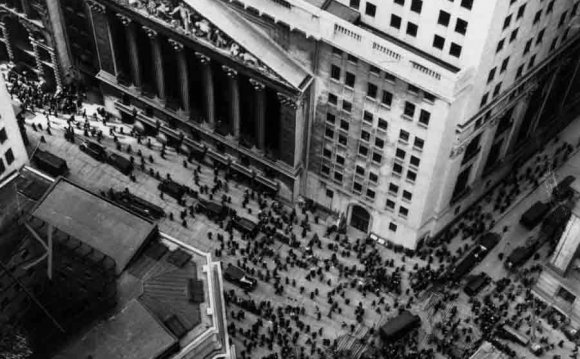
Krah Wall Street 1929
 In the morning, a bunch of shareholders stood around the New York exchange building. Thousands of people just watched NYSE silently. There was a future British Prime Minister, Winston Churchill, who put a whole fortune in (and subsequently lost) securities. It was this day that he was given a tour on the market.
In the morning, a bunch of shareholders stood around the New York exchange building. Thousands of people just watched NYSE silently. There was a future British Prime Minister, Winston Churchill, who put a whole fortune in (and subsequently lost) securities. It was this day that he was given a tour on the market.
The city authorities sent 400 final policemen to Wall Street, fearing the storm of the stock exchange.
It started at 10:00. The Dow Jones Index is 381, 17 points. The events that steeply engulfed on Wednesday began to cost. In minutes, a number of papers were added at a cost of half a dollar, to $11 a grand.
A package of 13,000 Pakkarda shares was purchased at 10.10.
10.10-10.25 - Prices are stable, small quantities of paper trade go smoothly.
10.25. Suddenly, there was a large amount of equity in General Motors. Not exactly the usual offer for the start of the day. Such volumes were generally offered at a peak price at the end of the session. And here, something happens, and there's a big fracture of a bully. The value of one J.M stock goes down by 80 cents.
 At 10.30, brokers started throwing orders at the highest possible price. In modern stock language, market bids for sale have come up.
At 10.30, brokers started throwing orders at the highest possible price. In modern stock language, market bids for sale have come up.
11.30. The balcony is screaming and moaning. Brokers run and push, taking off their jackets, trying to follow up on customer orders.
The telegraphed ribbon with the share prices is unreliably off the real, rapidly falling quotes.
Brokers require customers to fill the stamp(s) immediately under the previously acquired paper. Most investors, without the means, are unable to do so. Open long positions are forcibly eliminated, resulting in sales lacuna and further price collapse. A chain reaction or a domino principle is included.
Owners are trying to get rid of such profitable investments. At all costs. The total volume of paper sold that day was almost 13 million. Unspeakable number. But the antirecord time just started.








